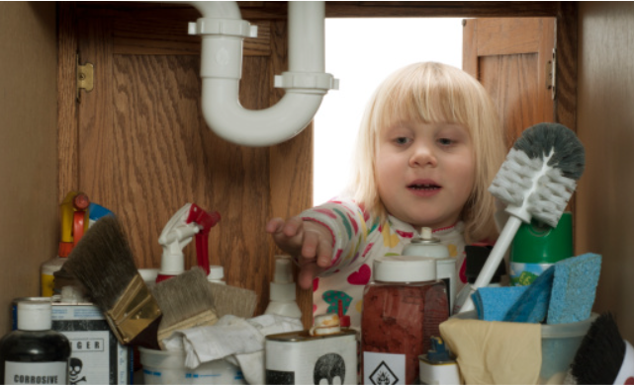Today’s post is written by Ashley Taylor, who blogs at DisabledParents.org.
As a disabled person, you’re aware of the role your home environment plays in preventing accidents. These factors become even more important when you assume the role of a parent. In this post, we’ll share tips for creating a safe, nurturing setting for all members of your household. Taking care of these issues now can help you to excel at other aspects of child rearing in the months and years to come.
Securing the Living Room
Here are some common child hazards that present themselves in the typical living room, along with ways to remedy the dangers:
- Candles, matches, and candle lighters. Keep these items out of children’s reach until they are old enough to use them safely. Even toddlers can ignite fires or choke on candle wax if their curiosity gets the better of them.
- Pictures frames on tables or low shelves. Your children can suffer from cuts if they overturn a frame and the glass breaks. Also, many frames have pointed metal corners and edges that can cause harm. Place these items on higher shelves or secure them to the walls.
- TV or entertainment console stands. Tipping these products over can lead to catastrophe, according to This Old House. Mount your television to the wall and/or install anti-tipping measures in your entertainment center. You should use similar safeguards for all large or heavy furniture.
- Exposed cords or power strips. A child might tug on these items, causing electrocution or fire risks. Tuck the cords out of the way, secure them to baseboards, or reroute them to areas beyond your child’s reach.
- Toys or other objects scattered on the floor. These can cause tripping or choking hazards. Put these items in a proper storage container.
Keeping the Kitchen Safe
The kitchen is the heart of the home, a place to prepare delicious meals and form happy memories. But it can also create a prime setting for injuries if you fail to take the following precautions, which come recommended by the safety experts at Consumer Reports:
- Keep small kids out of the kitchen when you’re cooking, especially if they’re able to move about on their own.
- Turn pot handles toward the stove if you must leave the kitchen for a minute. This will reduce the risk of serious burns.
- Keep step stools out of reach of small hands. Otherwise your child might see you using the product and try to imitate you.
- Avoid storing items in floor-level cabinets or secure the doors with locks.
Removing Risks From Your Bathrooms

The bathroom is an important room in the house. Here’s how to keep this area safe:
- Place harmful chemicals out of your child’s reach or secure the cabinets with locks or other anti-tampering devices.
- Wipe up wet spots right after they form. This will prevent slip hazards.
- Set your water heater temperature to just under 50°C and keep it there. This will help prevent burns.
- Install child-proof sink and tub knobs.
- Never leave children unattended while you’re bathing them! Tragedy can occur within seconds.
General Safety Tips
Some guidelines apply to the entire home rather than a specific area. Here are some examples:
- Check your smoke alarms and carbon monoxide detectors at the start of each season and replace batteries on a regular basis.
- Keep a charged fire extinguisher on hand in the kitchen and in any areas with open flames, such as fireplaces. Speaking of fireplaces, you should use a screen or hinged covers to control your child’s access to these areas.
- Practice fire drills on a regular basis. Keep the activity fun and reward children for following directions.
Not all dangers to your kids come from outside your home. Some are lurking right in front of you. If you’re a disabled parent, use the tips in this post to locate and remove these hazards. There’s no better way to lay a solid foundation for parenting success.
Author
Ashley Taylor is a freelance writer, photographer, and advocate for people with disabilities. She created DisabledParents.org to provide information and resources to other parents with disabilities. When she isn’t working, she enjoys spending time with her husband and two children.
Related post: How to Baby Proof your Apartment



Leave a Reply